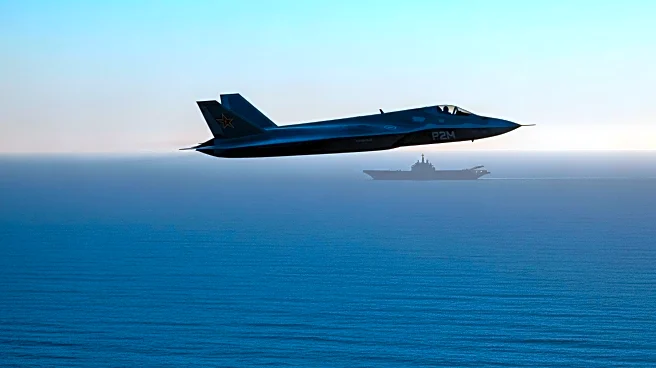What is the story about?
What's Happening?
The Chinese aircraft carrier Fujian has successfully launched and recovered advanced naval aircraft, including the J-35 stealth fighter and KJ-600 early warning aircraft, marking a significant milestone in China's naval modernization efforts. The Fujian, a Type 003 carrier, is the largest warship launched in Asia since World War II and represents a leap in capability for China's navy. Equipped with an electromagnetic catapult, the Fujian can support an air wing of 40 aircraft, allowing for operations with greater payloads and range. The carrier was recently seen sailing through the Taiwan Strait towards the South China Sea for testing, amid regional carrier buildups by other powers such as India and Japan.
Why It's Important?
The successful tests of the Fujian's advanced aircraft systems underscore China's growing military capabilities and its strategic ambitions in the Asia-Pacific region. The carrier's ability to project power with fifth-generation stealth aircraft and advanced early warning systems enhances China's naval presence and could shift regional power dynamics. This development is significant for U.S. interests, as it challenges the balance of military power in the region and may influence U.S. defense strategies and alliances. Countries like India and Japan are also responding by upgrading their naval capabilities, indicating a potential arms race in the region.
What's Next?
The Fujian is expected to be commissioned soon, further solidifying China's naval power. As regional powers continue to enhance their military capabilities, tensions in the Asia-Pacific may rise, prompting diplomatic and military responses from the U.S. and its allies. The strategic implications of China's carrier advancements will likely be a focus in upcoming defense discussions and policy decisions.
Beyond the Headlines
China's advancements in naval technology, particularly the electromagnetic catapult system, highlight its commitment to modernizing its military and achieving technological parity with the U.S. Navy. This could lead to increased competition in military technology development and influence global arms trade dynamics.
AI Generated Content
Do you find this article useful?














